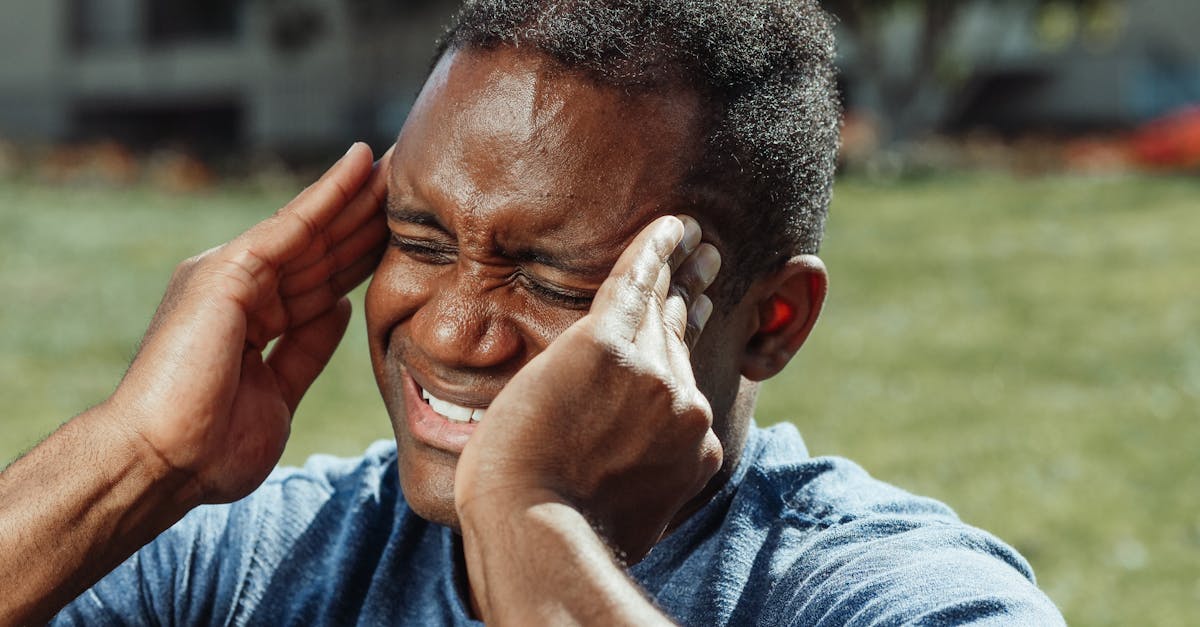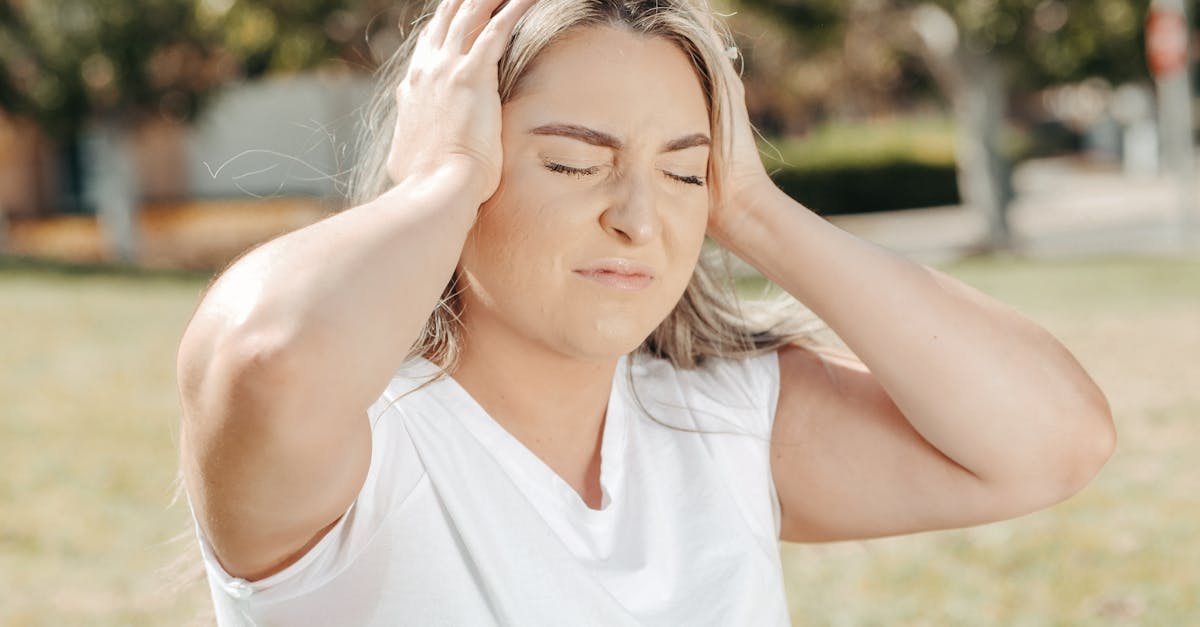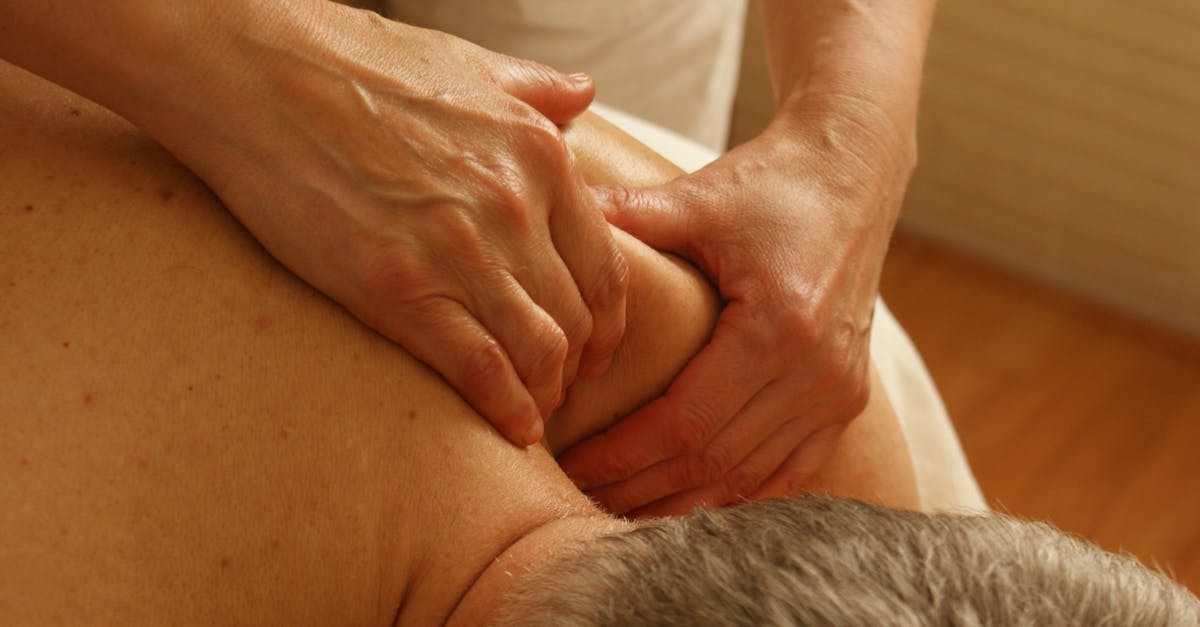Struggling with migraine pain and tension headaches? You’re not alone.
In Short: The migraine diet can be a game-changer for those seeking effective migraine relief. By understanding foods that trigger migraines, you can tailor your nutrition to alleviate symptoms and improve your quality of life. Reducing exposure to known migraine triggers promotes fewer episodes and less severe chronic migraines. With practical insights into managing your diet, you can reduce pain and discomfort while nourishing your body with beneficial foods. Reclaim your health and wellness at Pulse Align Clinics. BOOK YOUR APPOINTMENT today!
Are you struggling with migraine diet tweaks to find migraine relief?
Discover a revolutionary approach to enhancing your nutritional efforts with Pulse Align as you navigate through the complexities of migraine triggers and effective natural headache remedies. Studies show that proper dietary choices can significantly influence migraine pain and offer headache relief for various types of migraines, including aura migraines and menstrual migraines. By understanding which foods may worsen your condition and integrating Pulse Align’s holistic strategies, you can effectively manage your symptoms and improve your overall well-being.

“`html
Enhancing Your Well-Being: The Role of Pulse Align in Posture Improvement
Are you looking for ways to boost your overall well-being? You’re not alone. Many individuals strive for posture improvement and a balanced, healthy lifestyle. Fortunately, gentle techniques are available that can help recalibrate your body and support its natural processes. One such method is Pulse Align, which focuses on neuromuscular recalibration.
The Power of Natural Balance
Pulse Align takes a holistic approach to wellness through gentle stimulation and techniques designed to promote muscle tone symmetry. By addressing the underlying factors that contribute to imbalance, Pulse Align encourages your body to function in its natural state, enhancing overall well-being. This method is perfect for families looking to support everyone in their journey toward improved posture and reduced discomfort.
Holistic Benefits for Everyone
Imagine improving your posture naturally and enjoying a more balanced life. Recent client feedback highlights the gentle yet effective nature of Pulse Align. Many have experienced enhancements not only in how they feel but also in their daily activities. A recent client noted, “I’ve noticed a significant reduction in tension and discomfort after a few sessions—my posture is noticeably better!” Such testimonials reflect how focusing on natural balance can lead to positive changes in daily life.
Your Path to Wellness
Ready to enhance your well-being? Discover the many potential benefits of engaging with the services of Pulse Align. We invite you to learn more and book a consultation by exploring various locations including Montreal, La Prairie, Terrebonne, Chicoutimi, and more! Our family-friendly and non-invasive approach is designed for everyone, including children and expectant mothers. Remember, while Pulse Align complements your wellness journey, it works best alongside your existing healthcare services.
- Focus on Whole Foods: Prioritize fresh fruits, vegetables, and whole grains.
- Stay Hydrated: Drink plenty of water to help reduce migraine triggers.
- Limit Caffeine: Monitor caffeine intake to prevent withdrawal headaches.
- Frequent Meals: Eat small, balanced meals to maintain steady blood sugar levels.
- Avoid Known Triggers: Identify and eliminate specific food triggers, as needed.
- Balanced Nutrients: Incorporate healthy fats and proteins into each meal.
- Monitor Supplements: Use vitamins and minerals with medical guidance for prevention.
- Maintain a Healthy Weight: Work with healthcare providers for effective weight management.

Introduction to Migraine Diet Tweaks
For those seeking migraine relief, understanding the connection between diet and effective management is essential. Many individuals experience various types of migraines, including chronic migraines and menstrual migraines, and often turn to nutritional adjustments as a form of natural headache remedies. This article delves into dietary modifications that can aid in alleviating migraine pain, while also enhancing your overall neuromuscular health through the principles of Pulse Align.
The Importance of a Migraine Diet
Diet plays a significant role in managing headaches, especially those caused by specific migraine triggers. Certain foods may induce tension headaches or cluster headaches, leading to significant discomfort. By identifying potential headache causes in your diet, you can modify your eating habits to mitigate recurrent migraine episodes. Keeping a food diary may assist in pinpointing the foods that trigger your symptoms, allowing you to implement a personalized migraine diet.
Identifying Potential Trigger Foods
Many individuals may find that foods such as aged cheeses, processed meats, and artificial sweeteners can lead to headaches. Moreover, it’s crucial to maintain awareness of individual reactions to foods that trigger migraines, as these can vary widely from person to person. Solutions include incorporating more fresh fruits and vegetables and limiting processed snacks to foster a more natural balance.
Hydration and Its Role in Headache Management
Dehydration is a common instigator of migraines and should never be overlooked. Consistently hydrating your body helps prevent headaches, particularly aura migraines or those accompanied by nausea with headache. Aim for a balanced intake of fluids throughout the day, favoring water over sugary drinks.
Essential Oils: A Natural Approach
Utilizing essential oils for headaches can serve as an excellent complementary approach to dietary adjustments. Oils like peppermint or lavender can offer soothing effects and enhance overall relaxation. Consider incorporating these into your daily routine alongside mindful eating for maximum effect.
Healthy Eating Habits for Migraine Relief
Having regular meal times can significantly decrease the likelihood of migraine onset. Irregular eating patterns can result in low blood sugar levels, triggering headaches. Consider this simple guideline: aim for five small meals throughout the day, ensuring each meal has a balance of protein, carbohydrates, and healthy fats.
Posture Correction and Core Strengthening
In addition to dietary tweaks, enhancing your posture through targeted approaches like posture correction and core strengthening exercises can reduce the frequency of certain migraines, such as vestibular migraines. Focused trunk exercises can help realign your body and alleviate undue tension, leading to a decrease in headache symptoms.
Your Personalized Path to Migraine Management
At Pulse Align, we empower you to take charge of your health through tailored nutrition and exercise regimens. If you are struggling with migraine pain, consider reaching out for a personalized consultation. Our team can help design a plan addressing your unique needs, including dietary modifications and exercise strategies.
Take Action Today!
There’s no better time than now to explore the benefits of a personalized migraine management approach. Discover how to transform your diet and exercise routines to improve your quality of life and make strides toward lasting migraine relief. Book your consultation with Pulse Align today!
| Dietary Aspect | Recommendation |
|---|---|
| Caffeine Intake | Limit to 1-2 beverages daily for episodic migraine; avoid for daily headaches. |
| Meal Frequency | Opt for small, frequent meals; avoid skipping meals to maintain blood sugar levels. |
| Healthy Fats | Incorporate omega-3 fatty acids; limit omega-6 intake to reduce inflammation. |
| Food Triggers | Keep a food diary to identify personal triggers; avoid if specific foods consistently cause symptoms. |
| Hydration | Stay hydrated; drink water throughout the day to prevent dehydration-related headaches. |
| Weight Management | Aim for a healthy weight; losing weight may decrease the frequency of migraine attacks. |
| Dietary Supplements | Consider using riboflavin, CoQ10, or magnesium after consulting with your doctor. |

Transformative Wellness Journeys with Pulse Align
Clients across various regions, including La Prairie and Mont-Royal, have discovered the profound benefits of integrating Pulse Align’s holistic approach into their wellness journeys. Many have expressed how our unique strategies for addressing migraine symptoms, particularly through dietary tweaks, have empowered them to enhance their overall well-being naturally.
In Terrebonne, clients have reported not only a reduction in migraine frequency but also improvements in their overall health and vitality. By embracing aesthetically pleasing and nutrient-rich meals recommended by our seasoned professionals, they have re-calibrated their bodies, allowing each individual to uncover the potential within themselves to maintain balance and harmony.
Likewise, Les Escoumins residents have shared insights on the noticeable shifts in their migraine journeys since partnering with Pulse Align. Our clients frequently endorse the nourishing food strategies we promote, which complement the body’s natural ability to restore balance. They have found solace in our commitment to supporting their overall wellness, highlighting how these dietary adjustments align with their personal recovery paths.
In the community of Deux-Montagnes, several clients have conveyed their appreciation for how Pulse Align collaborates with their healthcare teams, ensuring a comprehensive wellness solution. They have reported feeling more empowered in managing their health journeys, with many stating that our tailored meal plans have been pivotal in alleviating their migraine-related issues.
As clients from Sainte-Marie and beyond testify, Pulse Align is dedicated to enhancing their journey towards holistic recovery. Each testimonial reflects a unique story of triumph and serenity, underscoring the essence of our mission to support individuals as they achieve their wellness goals.
For clients in Chicoutimi, Châteauguay, and Saint-Jérôme, the importance of dietary interventions cannot be overstated. Many have experienced transformative changes that go beyond the initial promise of relief from migraines; they have discovered a vibrant lifestyle that champions wellness. By incorporating our dietary suggestions, they report feeling rejuvenated and invigorated.
Individuals in Panama City have also found value in our holistic services, aligning perfectly with their quest for improved health. Their experiences echo a common theme: that Pulse Align is more than just a clinic; it’s a supportive community that fosters improvement and resilience.
As more clients embrace the power of nutrition in their wellness journeys, they also appreciate the guidance offered through Our Clinics. Each marker on our map symbolizes hope, collaboration, and the unwavering commitment to holistic health.
Understanding Diet and Its Impact on Migraine Management
Many individuals living with migraine may wonder if there is a specific diet that can aid in managing their condition. While some foods and dietary supplements can influence migraine symptoms, there is no single universal diet that fits everyone. It’s essential to understand how nutrition, lifestyle, and environment intertwine to affect migraine frequency and intensity.
A significant percentage of the population experiences migraine — 21% of women and 10.7% of men. Though studies indicate a genetic component, environmental and dietary factors also play a significant role. By recognizing individual dietary and nutritional requirements, sufferers may reduce the frequency and severity of their migraine attacks.
Caffeine and Migraine: The Double-Edged Sword
Caffeine’s relationship with migraine is complex; while it may relieve headache pain for some, excessive consumption can lead to negative effects, such as daily headaches or medication overuse headaches. Limiting caffeine intake is often recommended for those with episodic migraines, while daily headache sufferers may benefit more from complete avoidance.
Feeding Your Body to Minimize Headaches
Time between meals significantly impacts headache occurrence. Consistent meal timing can help stabilize blood glucose levels and prevent headaches. Strive for small, frequent meals to maintain energy and avoid drastic dips in blood sugar.
Identifying Dietary Triggers
While foods such as alcohol, chocolate, and aged cheeses have long been thought to trigger migraines, recent evidence suggests that cravings during the pre-headache phase may play a bigger role. Keeping a food diary alongside a headache log can be a proactive strategy to uncover personal dietary triggers.
Healthy Eating Essentials
The U.S. Department of Health and Human Services recommends a balanced diet rich in whole grains, fruits and vegetables, healthy fats, and limited sodium. Eating regularly, particularly not skipping meals and focusing on a high-protein breakfast, can significantly enhance an individual’s ability to manage migraines.
Exploring Dietary Supplements for Migraine Prevention
Many individuals have sought out minerals, herbs, and vitamins for migraine relief. Key supplements like riboflavin, Coenzyme Q10, and magnesium have shown promise in studies, though results can take months to manifest. Consulting a healthcare professional before starting any supplement regimen is crucial.
Managing Weight to Reduce Migraines
Maintaining a healthy weight can play a significant role in managing migraines. Obesity is linked to increased headache frequency. Collaborating with a doctor to develop a tailored weight loss plan can be beneficial in minimizing migraines.
Our Mission
At Pulse Align, our mission is to deliver evidence-based, client-centered treatments that address the underlying causes of pain and dysfunction. By integrating advanced techniques and technologies, we strive to empower each person to take control of their health, ensuring a high standard of care, lasting relief, and an improved quality of life.
Learn more about our approach and available services at www.pulsealign.com and find a location near you here.
Transform Your Life with TAGMED’s Spinal Decompression Therapy
TAGMED’s advanced Spinal Decompression Therapy offers a non-surgical solution specifically designed to address moderate-to-severe disc issues, including herniated discs, bulging discs, and spinal stenosis. By gently reducing pressure on the affected discs and nerves, this specialized technique helps enhance mobility, alleviate pain, and supports your body’s natural healing process. If you’ve reached a plateau with other therapies, discover how TAGMED’s evidence-based decompression approach can help you resume an active, comfortable life.
Have you tried conventional treatments and still struggle with persistent back pain due to a severe disc condition?
Mechanism of Action
TAGMED’s neurovertebral decompression applies a controlled, progressive traction force to the spine. This method increases the space between vertebrae, reduces pressure on intervertebral discs and nerve roots, and promotes better fluid circulation in the targeted area. By lowering inflammation and relieving pain, this non-invasive solution is effective for individuals plagued with chronic back pain, sciatica, or facet syndrome. The gentle traction not only alleviates discomfort but encourages the body’s natural healing mechanisms, allowing patients to regain their quality of life.
Specific Benefits
This non-invasive approach effectively alleviates chronic pain linked to conditions like herniated discs or spinal stenosis. By minimizing pressure on nerve structures and optimizing fluid circulation around the discs, this therapy facilitates faster recovery and enhances overall well-being. Patients often report improvements in their ability to perform daily activities, reduced stiffness, and improved functionality, making it a compelling option for those seeking natural relief.
Comparison with Other Treatments
Unlike pain medications, corticosteroid injections, or invasive surgeries, TAGMED’s neurovertebral decompression technology offers a safer alternative without the risks associated with invasive interventions. Patients can avoid the potential side effects of long-term medication use while experiencing a quicker path to recovery. This approach has been shown to be effective for a wide variety of conditions, including degenerative disc disease, and is a compelling choice for those looking for evidence-based alternatives.
Case Studies or Testimonials
Numerous patients have shared their positive experiences following TAGMED’s neurovertebral decompression therapy. Testimonials often showcase significant improvements in lasting pain relief and a quicker return to daily activities. For instance, one patient reported a marked reduction in brachialgia symptoms, allowing them to engage in recreational activities they had avoided for years. These firsthand accounts highlight the tangible results and practical advantages of this therapeutic approach, making it a reliable option for individuals seeking effective pain management.
Embrace Wellness with Pulse Align: A Holistic Approach to Migraine Management
When considering adjustments to your diet for managing migraines, focusing on nutrition is essential. Integrating simple yet effective diet tweaks can enable you to enhance your overall wellness journey. Working alongside these dietary improvements, Pulse Align offers a unique, holistic health approach that complements your nutritional efforts.
At Pulse Align, we prioritize your well-being through posture correction and neuromuscular recalibration. Our gentle, non-invasive methods support your body’s natural healing abilities, helping to achieve improved posture while reducing discomfort and increasing mobility. Clients have reported a noticeable enhancement in their quality of life, feeling lighter and more energized after sessions.
We understand your journey matters; our client-centric approach cultivates a positive experience as we work together to discover the right path for you. The combination of mindful dietary choices paired with a commitment to wellness through Pulse Align can lead to a healthier, more balanced lifestyle.
If you are ready to enhance your wellspring of wellness, we invite you to discover the Pulse Align difference today. Schedule your consultation now and embark on a transformative journey towards optimal health. Let us support you in achieving the lasting results you desire.

Do you suffer from a chronic condition that responds little or not at all to conservative treatments?
For individuals seeking non-traditional solutions to discomfort, Pulse Align offers an innovative, non-invasive method that focuses on restoring the body’s natural balance and enhancing posture. Using gentle, imperceptible pulses, Pulse Align supports the body in fostering muscle tone symmetry and improving overall alignment. By creating a foundation of comfort and ease, this holistic approach addresses the fundamental aspects of well-being, allowing clients to experience a lighter sensation as tension in muscles and joints diminishes.
At Pulse Align, the focus is not on specific discomforts but rather on helping the body become its best version through natural recalibration. This gentle method encourages the body’s own mechanisms to initiate harmony, typically leading to remarkable improvements in overall wellness. Clients often find that enhanced posture and balance create a more favorable environment for day-to-day activities, aligning with their quest for a healthier lifestyle.
What sets Pulse Align apart is its personalized approach tailored to each client’s unique journey. Many have shared their transformative experiences, highlighting significant improvements in tension and discomfort, along with enhanced posture and overall vitality. The testimonials from individuals underscore the strength of a supportive community that celebrates every step toward well-being. This nurturing environment invites everyone, including families, to explore the possibilities that Pulse Align presents as they embark on their wellness journey together.
To learn more about how Pulse Align can complement your nutritional efforts, we encourage you to visit the Pulse Align website. You can find nearby locations in cities such as La Prairie, Mont-Royal, Terrebonne, and many more. Scheduling a consultation is simple and can be done online—allowing you and your family to embark on this enriching experience. Remember, Pulse Align works alongside your existing healthcare services while respecting their integral role in holistic healing.
Discover the benefits of a safe, non-invasive, and family-friendly approach at Pulse Align. To learn more about our services and book an appointment, visit our website: Pulse Align.
Frequently Asked Questions
Headache and Migraine
- Do migraines increase stroke risk?Migraines with aura slightly raise stroke risk, especially in women who smoke and use hormonal contraception.
- Can relaxation techniques help?Yes, meditation, yoga, deep breathing, or biofeedback can reduce frequency and intensity of attacks.
- Are migraines hereditary?Yes, the predisposition to migraines can be genetic, making some people more susceptible.
- Can migraines include nausea?Yes, nausea and sometimes vomiting are common migraine symptoms.
- What are common causes of headaches?Stress, fatigue, dehydration, muscle tension, sleep disorders, or too much caffeine can trigger a headache.
- Is stress a trigger?Yes, physical or emotional stress is among the most common headache and migraine triggers.
- Does exercise help regulate migraines?Moderate, regular exercise reduces stress and improves circulation, potentially lowering migraine frequency.
- Do blood sugar fluctuations trigger migraines?Hypoglycemia can trigger migraines in some individuals.
- Does progressive muscle relaxation help?Yes, it reduces muscle tension and stress, preventing tension-type headaches.
- Does cognitive-behavioral therapy help?Yes, it teaches stress and pain management techniques, reducing migraine frequency and intensity.
Ethan Dubois is dedicated to shining a light on the hidden struggles of chronic headaches. As a Headache Awareness Advocate at Pulse Align, he combines compassionate storytelling with cutting-edge research to bring clarity, comfort, and hope to those affected. Ethan’s mission is to empower readers with knowledge, break through stigma, and foster a supportive community where every voice is heard. When he’s not crafting insightful articles, Ethan can be found exploring the latest wellness trends, sharing practical coping strategies, or simply lending a listening ear to those in need. His heartfelt approach and unwavering commitment to awareness make him a trusted ally for anyone navigating life with headaches.
References
- Hvedstrup, J., Kolding, L. T., Ashina, M., & Schytz, H. W. (2020). Increased neck muscle stiffness in migraine patients with ictal neck pain: A shear wave elastography study. Cephalalgia, 40(6), 565–574. https://doi.org/10.1177/0333102420919998
- Bjarne, B. (2024). NECK MUSCLE ELASTICITY IN CERVICOGENIC HEADACHE PATIENTS MEASURED BY SHEAR WAVE ELASTOGRAPHY [PhD Thesis, Ghent University]. https://libstore.ugent.be/fulltxt/RUG01/003/202/979/RUG01-003202979_2024_0001_AC.pdf
- Zwart, J. (1997). Neck Mobility in Different Headache Disorders. Headache: The Journal of Head and Face Pain, 37(1), 6–11. https://doi.org/10.1046/j.1526-4610.1997.3701006.x
- Fernández-de-las-Peñas, C., Cuadrado, M., & Pareja, J. (2006). Myofascial Trigger Points, Neck Mobility and Forward Head Posture in Unilateral Migraine. Cephalalgia, 26(9), 1061–1070. https://doi.org/10.1111/j.1468-2982.2006.01162.x
- Fernández‐de‐las‐Peñas, C., Cuadrado, M. L., & Pareja, J. A. (2007). Myofascial Trigger Points, Neck Mobility, and Forward Head Posture in Episodic Tension‐Type Headache. Headache: The Journal of Head and Face Pain, 47(5), 662–672. https://doi.org/10.1111/j.1526-4610.2006.00632.x
- Martínez-Merinero, P., Aneiros Tarancón, F., Montañez-Aguilera, J., Nuñez-Nagy, S., Pecos-Martín, D., Fernández-Matías, R., Achalandabaso-Ochoa, A., Fernández-Carnero, S., & Gallego-Izquierdo, T. (2021). Interaction between pain, disability, mechanosensitivity and cranio-cervical angle in subjects with cervicogenic headache: A cross-sectional study. Journal of Clinical Medicine, 10(1), 159. https://www.mdpi.com/2077-0383/10/1/159
- Florencio, L. L., De Oliveira, A. S., Carvalho, G. F., Tolentino, G. D. A., Dach, F., Bigal, M. E., Fernández‐de‐las‐Peñas, C., & Bevilaqua Grossi, D. (2015). Cervical Muscle Strength and Muscle Coactivation During Isometric Contractions in Patients With Migraine: A Cross‐Sectional Study. Headache: The Journal of Head and Face Pain, 55(10), 1312–1322. https://doi.org/10.1111/head.12644
- Choi, S.-Y., & Choi, J.-H. (2016). The effects of cervical traction, cranial rhythmic impulse, and Mckenzie exercise on headache and cervical muscle stiffness in episodic tension-type headache patients. Journal of Physical Therapy Science, 28(3), 837–843. https://www.jstage.jst.go.jp/article/jpts/28/3/28_jpts-2015-893/_article/-char/ja/
- Aoyama, N. (2021). Involvement of cervical disability in migraine: a literature review. British Journal of Pain, 15(2), 199–212. https://doi.org/10.1177/2049463720924704
- Calhoun, A. H., Ford, S., Millen, C., Finkel, A. G., Truong, Y., & Nie, Y. (2010). The Prevalence of Neck Pain in Migraine. Headache: The Journal of Head and Face Pain, 50(8), 1273–1277. https://doi.org/10.1111/j.1526-4610.2009.01608.x
- Luedtke, K., Starke, W., & May, A. (2018). Musculoskeletal dysfunction in migraine patients. Cephalalgia, 38(5), 865–875. https://doi.org/10.1177/0333102417716934
- Yu, Z., Wang, R., Ao, R., & Yu, S. (2019). Neck pain in episodic migraine: a cross-sectional study. Journal of Pain Research, Volume 12, 1605–1613. https://doi.org/10.2147/JPR.S200606
- Ashina, S., Bendtsen, L., Lyngberg, A. C., Lipton, R. B., Hajiyeva, N., & Jensen, R. (2015). Prevalence of neck pain in migraine and tension-type headache: A population study. Cephalalgia, 35(3), 211–219. https://doi.org/10.1177/0333102414535110
- Lin, L.-Z., Yu, Y.-N., Fan, J.-C., Guo, P.-W., Xia, C.-F., Geng, X., Zhang, S.-Y., & Yuan, X.-Z. (2022). Increased stiffness of the superficial cervical extensor muscles in patients with cervicogenic headache: A study using shear wave elastography. Frontiers in Neurology, 13, 874643. https://www.frontiersin.org/articles/10.3389/fneur.2022.874643/full
- Kolding, L. T., Do, T. P., Ewertsen, C., & Schytz, H. W. (2018). Muscle stiffness in tension-type headache patients with pericranial tenderness: A shear wave elastography study. Cephalalgia Reports, 1, 2515816318760293. https://doi.org/10.1177/2515816318760293
- Pradhan, S., & Choudhury, S. S. (2018). Clinical characterization of neck pain in migraine. Neurology India, 66(2), 377–384. https://journals.lww.com/neur/fulltext/2018/66020/clinical_characterization_of_neck_pain_in_migraine.19.aspx
- Al-Khazali, H. M., Al-Sayegh, Z., Younis, S., Christensen, R. H., Ashina, M., Schytz, H. W., & Ashina, S. (2024). Systematic review and meta-analysis of Neck Disability Index and Numeric Pain Rating Scale in patients with migraine and tension-type headache. Cephalalgia, 44(8), 03331024241274266. https://doi.org/10.1177/03331024241274266
- Fernández-de-las-Peñas, C., Madeleine, P., Caminero, A., Cuadrado, M., Arendt-Nielsen, L., & Pareja, J. (2010). Generalized Neck-Shoulder Hyperalgesia in Chronic Tension-Type Headache and Unilateral Migraine Assessed by Pressure Pain Sensitivity Topographical Maps of the Trapezius Muscle. Cephalalgia, 30(1), 77–86. https://doi.org/10.1111/j.1468-2982.2009.01901.x
- Balaban, M., Celenay, S. T., Lalecan, N., Akan, S., & Kaya, D. O. (2024). Morphological and mechanical properties of cervical muscles in fibromyalgia with migraine: A case-control study. Musculoskeletal Science and Practice, 74, 103185. https://www.sciencedirect.com/science/article/pii/S2468781224002807
- Al-Khazali, H. M., Younis, S., Al-Sayegh, Z., Ashina, S., Ashina, M., & Schytz, H. W. (2022). Prevalence of neck pain in migraine: A systematic review and meta-analysis. Cephalalgia, 42(7), 663–673. https://doi.org/10.1177/03331024211068073



